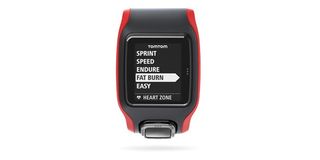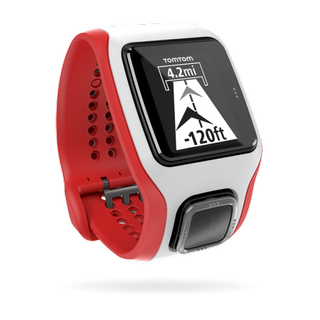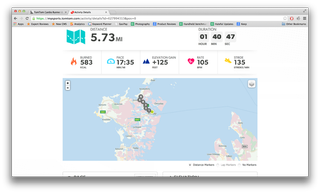You can trust Coach
TomTom’s first running watches, the Runner and the MultiSport, were comprehensive gadgets that did their jobs well but required extra accessories if you wanted to track your performance in greater detail. The Runner Cardio improves on the original with an integrated heart rate sensor, saving you the hassle of wearing a chest strap when running, but otherwise it sticks to a tried and tested formula. We wanted to find out if that's enough to make the new model a must buy.
Getting started
The Cardio looks almost identical to the original Runner, and with good reason – TomTom has made sure existing Runner owners can reuse their original straps with the new model. It’s available in two new colour schemes – red and black, and red and white – to distinguish it from the originals and it bulges out a little further on your wrist to accommodate the new electronics, but not so much that you won’t be able to wear it under a shirt sleeve.

As with the previous model, TomTom includes a proprietary cable to charge and sync the Cardio. You’ll need this to keep the watch topped up with juice, and to transfer your data to a PC or Mac. The main unit pops out of the strap and sits in the cradle when charging. Pulling the unit from the strap takes a little force, so we’re confident that it won’t fall out when you’re on the move. It also helps create a tight seal around your wrist for the heart rate monitor to work properly.
How does it work?
Like the original Runner, the Cardio has a four-way control button for navigating through the menus. It’s very straightforward, requiring just a few taps to find everything you need, and the monotone LCD screen is easy to read without you having to push your nose up to the screen. There’s also a backlight in case you’re out at night or in the early hours.
While you’re gearing up for a run, the watch takes a heart rate reading. The heart rate sensor uses Mio optical technology to measure your pulse by beaming a high-intensity LED on to your wrist. As long as there’s a tight seal around your wrist it’ll find a reading in just a few seconds, with accurate results that matched those of our other HRM-enabled kit.

Once the Cardio has measured your pulse, it scans for GPS satellites. This can take up to a few minutes if you're starting in a new location, but if you set off from a regular start point, the watch remembers and can detect a signal much faster. After a few runs, the watch took less than ten seconds to search for satellites compared with the two minutes at the start.
While running you can tap through several screens that show time, distance travelled, pace, heart rate and lap times. The watch typically lasts for up to nine hours from a full charge when measuring both GPS and heart rate, although with GPS disabled you can squeeze over 24 hours from a single charge.
Syncing your data
After your workout, plugging the watch into a PC or Mac over USB will open the MySports Connect upload agent (assuming you've installed it). From here, your data is uploaded to the MySports website. Log in to your account and you’ll be able to check your performance details, route maps and lifetime progress.

However, although it’s based on the excellent MapMyFitness technology, MySports is overly simplified and won't let you dig down further into your data. What you see is what you get, and unfortunately what you get is rather basic if you’re a serious distance runner. It's worth keeping in mind that the Runner Cardio is designed solely for runners. There are no extra modes for hiking or walking so everything is reported to MySports as a run.
Smartphone apps
If you have an iPhone, you can sync your workout data to the MySports website using the MySports app, bypassing the need for a PC. The watch uses Bluetooth Smart, so you can upload results on the move without having to wait for a Wi-Fi connection. TomTom is still working on its Android app, so anyone who has a smartphone running Google’s operating system will have to connect the watch to a PC or Mac to sync their data.
Verdict
With the Cardio, TomTom has changed very little from the original Runner, but then it didn’t need to - the first version was already tightly focused on running, and this new model does exactly the same job. The addition of the heart rate sensor and a few heart rate-specific information screens complete the package that was arguably lacking last year, making the Runner Cardio an excellent watch for beginner or intermediate runners. At £250 the price is spot on for a runner’s watch with integrated heart rate monitor, and although the MySports website doesn’t provide quite enough detail for dedicated distance runners, for most people it’s everything you could want.

Score: 8/10
RRP: £250
Manufacturer: TomTom

